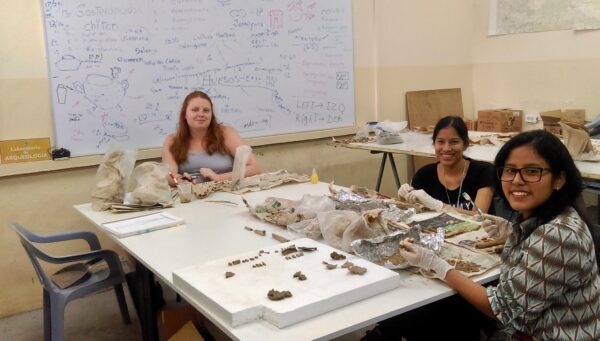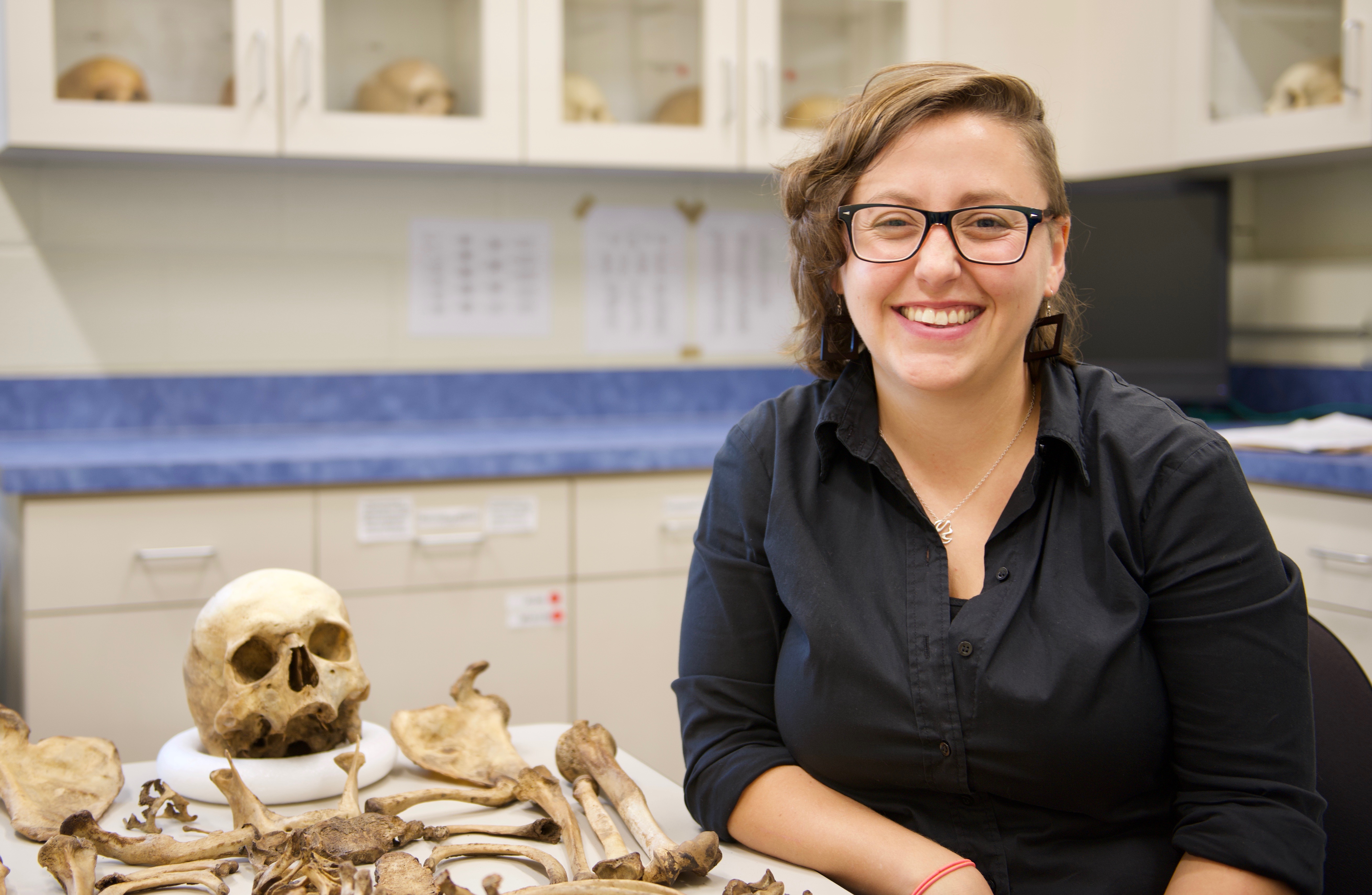Two infants unearthed in ancient burial mounds in Salango, Ecuador were buried wearing helmets crafted from the skulls of other children, in what researchers believe was a unique practice perhaps intended to protect the infants’ souls during their journey to the afterlife.
“This has literally not been seen before, to our knowledge. We think this is a totally novel burial practice,” says bioarchaeologist Sara Juengst, an assistant professor in the Department of Anthropology at UNC Charlotte.
The research team – composed of UNC Charlotte’s Juengst and Abigail Bythell and Richard Lunniss and Juan José Ortiz Aguilu of Universidad Técnica de Manabí in Ecuador – published their findings in November in the journal Latin American Antiquity. The paper has attracted worldwide attention, including in major news outlets such as The Washington Post, Nature, CNN, and the Smithsonian online magazine.
The infants were among 11 burials discovered between 2014 and 2016 at a ritual burial complex dated to approximately 100 BC. The mounds likely were built by the Guangala, a culture that existed on the southwest coast of Ecuador at that time.
The Universidad Técnica de Manabí researchers recovered the heads and surrounding soil to help preserve the bones. Juengst and Bythell, who completed her master’s degree in anthropology in May 2019, traveled to Ecuador to separate the cranial layers and assess the burials.

In one case, they found that the skull of a child who was between 4 and 12 years old was removed and placed on the head of an infant believed to be approximately 18 months old at death. In the second instance, the skull of a child who may have been as young as 2 was placed on the head of an infant believed to be between 6 and 9 months old at death.
The researchers describe the cranial coverings as helmets because they extend to the back and sides of the heads, with the face of the infant wearing the helmet looking out of the other child’s skull. Analysis shows that skin and tissue likely held the skulls together.
Between the two skull layers in one instance, they found a small shell and a small hand bone that appear to have been placed intentionally. The archaeologists also found stone ancestor figurines near the skeletons, which could be further indication of a desire to protect the infants’ souls.

Human heads are known to be potent symbols for many cultures in South America and elsewhere, and they have long been linked with rituals and symbolic power. In particular, children have received careful treatment during burial as a way of controlling the universe, because of the belief that children’s souls acted as benefactors to the living, the researchers wrote.
While nothing so far indicates the children were sacrificed to obtain their skulls, the researchers cannot rule this out. The burial site was found above a layer of volcanic ash, which might suggest a connection with an eruption and a response to food shortages, but more research is needed to explore a possible link to the volcanic eruption. All the skulls show lesions, either from malnutrition, disease or other stress.
The researchers expect that DNA and isotope analyses will help them understand the relationships among the children, and that radiocarbon dates will give insights into the chronology of the burial practice.
“In future research, we would like to place these burials within the context of the larger mortuary complex of these particular mounds and other sites more broadly,” Juengst said.
It could be that the motivations of the people who conducted the rituals will remain a mystery. Juengst does think about the emotions of those who conducted the rituals, drawing some comfort from her suspicion that the rituals were intended as protection from further harm or a way to link to ancestors.
“We cannot know for sure what was in the minds of the people who performed these rituals,” Juengst said. “We think we know a lot about the past, and then we have discoveries like this.”
Funding and logistical support were provided by a Faculty Research Grant from UNC Charlotte and by the Universidad Técnica de Manabí.
Top image: Bioarchaeologist Sara Juengst is in a lab at UNC Charlotte, with elements of the UNC Charlotte teaching collection, used to train students in bioarchaeological and forensic analysis.
Words and Image of Juengst in a UNC Charlotte lab: Lynn Roberson | Other images: Courtesy of Juengst.








